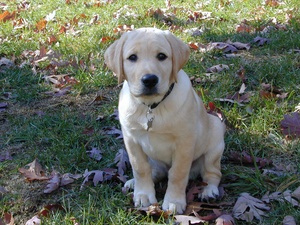Though their early origins are vague due to a lack of documentation, the old English sheepdog’s (OES) easy going personality and intelligence are no mystery to those close to the breed. Most likely developed in western England in the early 19th century, the OSE was commonly used to help farmers drive livestock to market. Despite its natural instincts and desire to work, a well-exercised, modern OSE is just as content curled up on the couch with their favorite person as they are when working or participating in agility, obedience, or herding trials. Their characteristic thick, shaggy coat and docked tail help make the OES one of the most recognizable dog breeds in existence. However, one thing that can’t be recognized from physical appearance alone is an individual OES’s likelihood to produce puppies with inherited disease. Through the use of genetic testing and selective breeding practices, the incidence of some inherited diseases can be greatly reduced (or even eliminated) from blood lines.
Exercise-Induced Collapse
One concern of the OES lover is a disease often associated with the Labrador retriever known as exercise-induced collapse (EIC). EIC is a troubling neuromuscular disorder caused by a mutation in the
DNM1 gene. As its ...









